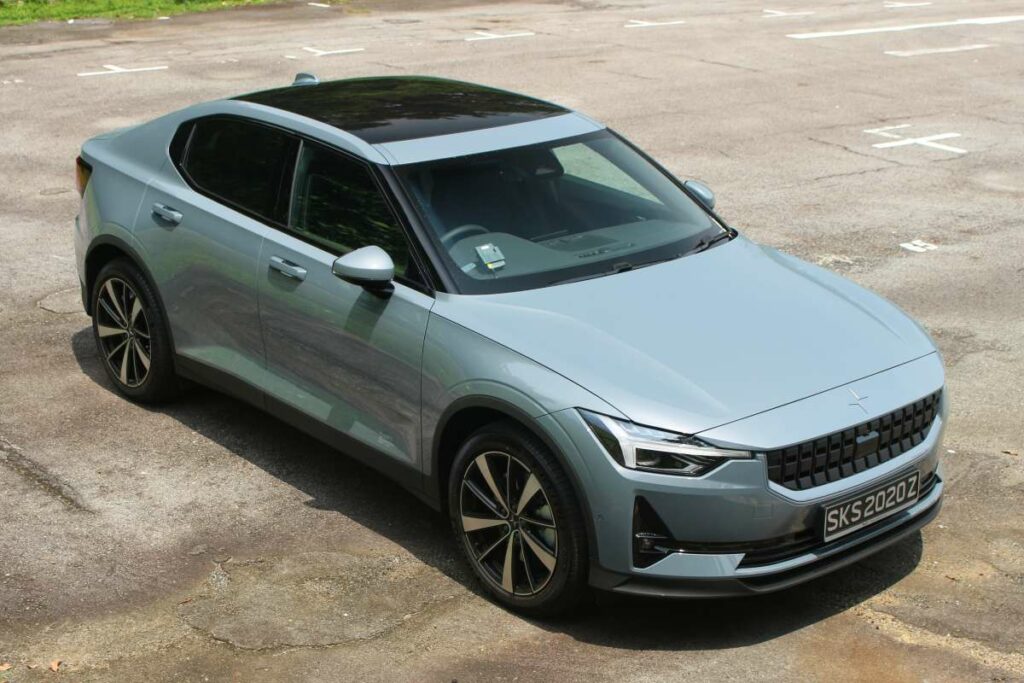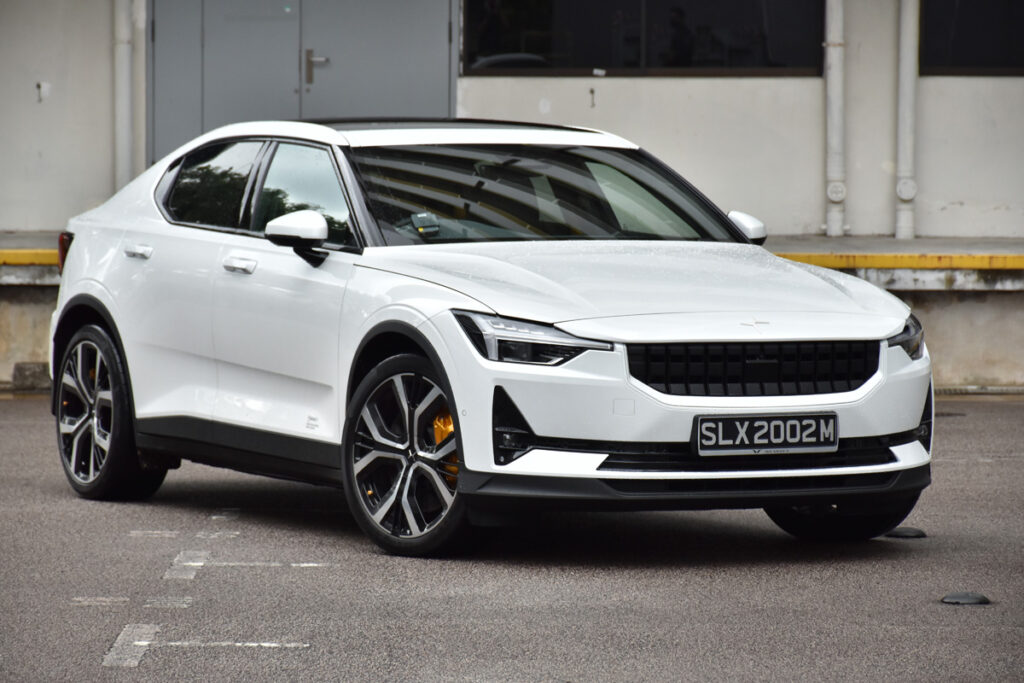The best executive EVs in Singapore


We take a look at the leading contenders in the executive EV class in Singapore, including highlights from BMW, Polestar and Tesla.
The number of electric vehicle (EV) models in Singapore have grown pretty substantially over the past year, such that we now have enough of a selection to group them into categories based on price and body style.
The previous Best Of guide for EVs covered mainstream models, at that time defined as under $200,000 inclusive of COE, but will probably be redefined as those that will come under COE Category A once the re-categorisation exercise for EVs comes into effect in May 2022.
In any case, the majority of EVs will remain in Cat B, given that most of them will breach the 110kW power threshold.
As well, it is usually the top-end premium brands like Audi, BMW and Mercedes-Benz that are embracing EVs faster than the mainstream brands here, given that their customer base is typically more receptive and accepting of EV technology than mainstream buyers.
There are also new EV brands in the market like Polestar and Tesla who are jostling for the pie, and aim to win over customers with their fresh approach and emphasis on groundbreaking tech.

While many of the EVs currently on sale takes the form of crossovers and SUVs, there are also a number of EVs that are of the three-box sedan variety, which will appeal to executives wanting something that looks more traditional while still offering the latest EV tech.
We take a look at three such executive EV contenders currently available in Singapore, and the thoughts from the CarBuyer team on what they bring to the table in this fast-growing EV market.
(Models are listed in alphabetical order, not by merit)

BMW has been ramping up its EV offerings in the past year, with the introduction of the iX3 and iX SUVs helping the brand push into the forefront of the EV movement in Singapore.
BMW's latest EV to hit the market is the i4, a sleek four-door sedan (although BMW calls it a "Gran Coupe") that is as advanced as its other electrified siblings.
All the details about the BMW i4's launch in Singapore and find out how far we could go in the i4 on one charge (hint: Really far)
As of now, the sole i4 variant available on sale is the eDrive40, which has 340hp and 430Nm of torque, and goes for $311,888 with COE.
Compared with other high-end EVs on the market, the numbers seem modest, but the i4 delivers its power in a smooth and effortless fashion that makes it an excellent highway cruiser.
Those who desire more power can await the high-performance i4 M50 model that will arrive by the end of this year.

The i4 shares the same basic silhouette and design with the 4 Series Gran Coupe on which it is based.
Minor details like the blue highlights around the front, side and rear, the closed-off grille, and the lack of rear exhaust pipes mark out the i4's electric credentials, but otherwise, the i4 can pretty much pass off as a regular 4 GC.

The interior features the BMW Curved Display screens first seen on the BMW iX, with its large 14.9-inch infotainment screen combined with the 12.3-inch driver instrument display through one set of glass, giving it a more streamlined look and user experience.
The software runs on the latest BMW OS 8 operating system, and incorporates the latest BMW tech features such as the Intelligent Personal Assistant (IPA) voice recognition system, as well as the ability to use your phone as the car key via BMW's app.

In terms of interior space, the i4's sleek coupe-style roofline means that rear headroom is somewhat compromised.
This is somewhat exacerbated by the battery pack being incorporated into the floor, pushing the rear seat even higher.
Most average-sized adults will be able to fit with no problems, but taller folks might find their heads brushing against the roof.

The i4's greatest strength though is its drivability. It's perfectly balanced, with its low centre of gravity giving it plenty of stability at speed and in the corners.
Its eager, accurate nose and feelsome steering, along with its rear-wheel-drive setup, offers up plenty of enjoyment for the keen driver, with a remarkable sense of composure that's absent in many other EVs.
Its electric range is pretty impressive too. BMW officially quotes a range of up to 591km for the i4 eDrive40, but even on a relatively heavy foot, you can easily achieve over 400km on a full charge, which is plenty for our little island.
In our experience, BMW's EVs tend to be extremely energy-efficient, so there's little worry about running out of range even for relatively long-distance journeys.
ALSO READ: 2022 Polestar 2 Standard Range review: The most affordable entry-point into luxury EV motoring

Polestar is Volvo's electric offshoot brand, and its first offering in Singapore is the Polestar 2 executive sedan.
The brand is not shy about targeting Tesla, although it says that the Polestar 2 is a "companion" to the Model 3, in the sense that they are aiming to convert drivers of internal combustion engine (ICE) cars to switch to EVs.
In Singapore, there are three variants of the Polestar 2 available for sale.
The base model is the Standard Range Single Motor ($217,000 with COE), which features a 231hp motor with a 69kWh battery that's good for 474km of range.
There's also the Long Range Single Motor ($233,000 with COE), with the same 231hp drivetrain paired with a larger 78kWh battery that offers 542km of range, while the top-spec model is the Long Range Dual Motor ($259,000 with COE), which has a two-motor setup for a combined 408hp, with its 78kWh battery giving it 482km of range.

We've driven both the Long Range Dual Motor and the Standard Range Single Motor variants, and in our opinion, the entry-level model is more than adequate for most people's needs in Singapore.
There's more than enough range to cover a week's worth of driving for most drivers here, and its competitive price tag makes it one of the best value executive EVs on sale today.

The driving experience is mostly comfortable and easy-going, leaning more towards refinement than outright dynamism.
The Standard Range can be brisk, getting from 0-100km/h in 7.4 seconds, but it doesn't have the same sort of explosive acceleration force as the Tesla Model 3.
It handles pretty capably, with decent amounts of agility, if not quite as entertaining to drive as the BMW i4.

The interior of the Polestar is fairly Volvo-like, with the familiar vertical-stacked touchscreen and the minimalist design approach.
The infotainment software runs on Google's Android Automotive system, which does take some getting used to if you're not connected to Google's sphere of influence (i.e. most iPhone users), but Polestar promises future software updates that will make the overall user experience much more seamless than it is currently.

The Polestar 2 makes for an attractive option for those who want a premium executive EV at a relatively affordable entry price point.
It may not have the most advanced tech or the most exciting and engaging drive, but it does the job well enough to warrant serious consideration for those making the leap into EV ownership.
ALSO READ: Mercedes-Benz concept store opens at Great World, previews EQS electric luxury limo

Arguably one of the most eagerly-awaited models in Singapore, the Tesla Model 3's (official) arrival here pretty much upset the established automotive order.
Tesla sold nearly 1,000 cars in its debut year, helping it break into the top 10 best selling brands in Singapore, a feat that's almost unheard of in our market.

Part of it can perhaps be attributed to the cult of Elon, but Singaporean buyers are also a discerning bunch, and if Tesla's models are not up to par, then they'll be found out very quickly.
Thus far though, evidence on the ground suggests that the cars do somewhat live up to the hype, with their combination of performance and tech advances that many owners have embraced.

Buying a Tesla also gets you access to the company's Supercharger fast-charging network, which for a while offered free public charging in Singapore, but has recently moved towards a pay-to-use model.
Like the Polestar 2, the Model 3 comes in single motor and dual motor variants.
The single motor Standard Range Plus ($113,245 without COE) offers rear-wheel-drive, 321hp and a 50kWh battery that's good for 448km of range, while the dual-motor Model 3 Performance ($167,012 without COE) packs in a whopping 505hp, and a 78kWh battery that Tesla says can offer up to 547km of range on a full charge.

Tesla quotes its prices without COE, but even with a nearly $100,000 Cat B COE, the Model 3's pricing remains competitive vis a vis its rivals, so you might as well go for the top-spec Performance variant, and the neck-breaking acceleration that comes with it.
0-100km/h in 3.3 seconds is a supercar-matching pace, and for performance junkies that level of power can be fairly addictive.

Insane acceleration aside, the Model 3 is actually a pretty neat drive.
While the car's weight means that it's not as sharp as a proper sports car, it still feels reasonably taut and balanced, and offers a decent level of engagement in the corners, with the low-mounted batteries helping it keep body roll to a minimum.

What truly makes or breaks Tesla though is its interior packaging. The car's touchscreen-focused setup, with a notable dearth of buttons or physical controls, is a truly love-it-or-hate-it affair.
Nearly everything, from the speed and driving info, to the air conditioning controls, is accessed by the touchscreen, and it's something that needs a lot of getting used to.

If that's something you can get on board with though, then there are few cars that can offer the same sort of driving experience as the Tesla Model 3.
Judging from its sales success here, it appears that plenty of Singaporeans have been convinced by its merits.
This article was first published in CarBuyer.